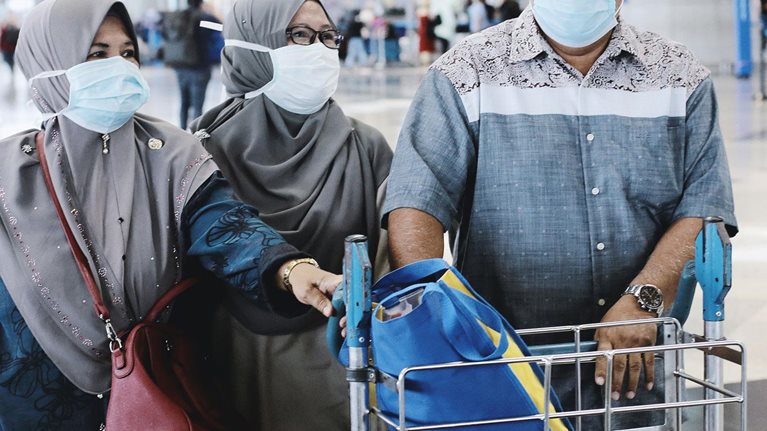In the 2020 report, “The travel industry turned upside down,” McKinsey & Company partnered with Skift Research to document the unprecedented impact that COVID-19 had on the travel sector.1 One year later, we find that the travel sector is bouncing back—yet recovery still has a long way to go.
Although 2021 performance has improved considerably, the Skift Recovery Index shows it is still 35 percent below pre-pandemic levels globally. Furthermore, different geographies tell vastly different recovery stories as a result of varying travel restrictions, COVID-19 case counts, and the strength of domestic travel markets. North America shows strong recovery performance, while many Asian countries are showing lower recovery scores as they remain far more cautious in opening their borders (Exhibit 1).

In this report, McKinsey and Skift Research assess the current traveler experience and find mixed signals. While surveys and customer satisfaction rating analyses show many travelers are satisfied with their experiences—some, surprisingly, more so than before COVID-19—a deeper look at the data reveals troubling undercurrents.
Despite high satisfaction ratings, negative sentiment is on the rise.2 Furthermore, operational capacity is strained, staffing challenges are widespread, airline complaints are up, rental cars are hard to come by, and hotel amenities and services remain substantially pared down.
Given the seeming contradiction between performance and satisfaction, the true situation may simply be that leisure travelers are happy to be on the road again after a year of being stuck at home. As travel volumes increase and business travelers return, there is potential for a wave of customer dissatisfaction—at a time when loyalty is up for grabs.
Will travel players manage to reboot customer experience before travelers’ “honeymoon phase” comes to an end? Or will thinning customer patience shock the system?
Would you like to learn more about our Travel, Logistics & Infrastructure Practice?
Customer experience is the challenge of the recovery
Whether it’s more tailored products, greater digital parity with analog services, or faster turnaround, customer expectations of what great customer experience (CX) looks like have shifted significantly. COVID-19 only accelerated these trends, leaving the travel ecosystem in a game of catch-up.
In this changing landscape, travel companies that prioritize CX can gain loyalty, build resilience, and future-proof their businesses.
Yet while travel executives may believe their companies deliver strong CX today, our research indicates there is room for improvement. Common challenges include inconsistency in CX across products, services, and digital; difficulty predicting customers’ sentiment without having to ask them; and time lags in going to market with updates, releases and enhancements.
This report explores the critical role of CX in the travel industry at this pivotal moment in time. Travel executives can ask themselves:
- Do you believe your customer experience is consistently high across product, service and digital? Research shows that you can aim higher.
- Do you know the sentiment of your customers without ever having to ask them? Research shows that you can understand your customers more deeply.
- Do you move as fast today as you did when the pandemic first struck? Research shows that you can move faster.
- Ultimately, how can you be more intentional about unlocking the value of customer experience and bringing back the magic of travel?
Travel companies are still absorbing COVID-19’s financial impact, and investing in CX now may seem too great a burden for many of them. But companies that prioritize CX during a downturn stand to outperform their competition for years to come—as McKinsey research on the 2007–09 downturn has shown.3 Indeed, wise investment in CX may be key to the industry’s survival, and flourishing, in a post-pandemic world.
There are mixed signals around the current customer experience
As travel volumes are starting to return in many parts of the world, stories have begun to surface about problematic travel experiences.4 Has the travel experience in fact gotten worse? The answer is not clear cut as there are mixed signals around the current customer experience.
On the surface, traveler satisfaction does not appear to have declined during the pandemic
Perhaps surprisingly, Skift Research’s Traveler Tracker survey found that more than 80 percent of leisure travelers were satisfied with their Summer 2021 flight and hotel experiences—indeed, nearly half rated their trips as better than those they’d experienced pre-COVID-19 (Exhibit 2).5 Similarly, a Travelsify analysis of over 60 million hotel guest reviews found minimal changes in review scores, and a Transparent analysis of vacation rental property ratings found that current scores are comparable to 2019 levels.6

These surprising “satisfaction” rating findings may be the result of leisure travelers simply being happy to be on the road again.
Despite steady satisfaction ratings, negative sentiment is on the rise
As time passes, travelers may become less willing to lower their expectations and accept sub-par service under the guise of “safety.” A sentiment analysis of Tripadvisor reviews from the United States, Europe, and Asia found the emotional intensity of customer reviews increased considerably from 2019 to 2021 (Exhibit 3). Perhaps unsurprisingly, given the pandemic-induced impacts to hotel operations, the shift in sentiment was driven primarily by more negative views on cleanliness, food standards, and service.

Business travelers may not be as understanding as leisure travelers have been
Business travelers typically travel more frequently than leisure travelers, and often have higher expectations; they have long complained at higher rates than leisure travelers, and COVID-19 has only exacerbated this divide. The American Customer Satisfaction Index shows that 38 percent of business passengers complained to the airline, double the rate of leisure travelers.7 Particularly as corporate travel volumes return, companies may see a decline in satisfaction.
There is a potential for a wave of dissatisfied customers at a time when loyalty is up for grabs
In fact, a McKinsey consumer survey found that customers are twice as likely to try new brands and experiences as a result of COVID-19 and 75 percent of US consumers tried a different store, website or brand during the pandemic.8 This is particularly important in the travel sector with its strong reliance on loyalty programs.
Now is the time for companies who have maintained their satisfaction and performance levels to reprioritize CX and gain an even greater competitive advantage.

A travel boom is looming. But is the industry ready?
Three strategies to transform your customer experience
This report presents three strategies for travel entities to use to transform CX during the recovery. First, aim higher than your competitors, and aspire to bring back the magic of travel. Second, look forward, using a robust measurement toolkit to understand your customers better. Last, move fast, leveraging a nimble, agile organization to implement insights swiftly).
Aim high—aspire to bring back the magic of travel
The travel industry once set the gold standard for CX, with the offer of memorable journeys and adventures. Travel companies should aspire to bring back the magic of travel by first expanding their view of CX from being human-centered to include digital as well.
Then travel companies can build an emotional connection that exceeds customer expectations. Travel brands must sell the way they make their guests feel: well rested in advance of an important meeting; awestruck at a beautiful destination; recharged after a getaway; appreciated after a heartwarming, personal farewell as they disembark from a plane on the way home. Companies can build these emotional connections by leveraging the science behind delight: While satisfaction is a rational assessment of reality minus expectations; delight is emotional, and is experienced as a result of joy and surprise.9 Travel companies can aspire to delight, not just satisfy.
Look forward—understand your customers better
To deliver on ambitious aspirations, travel companies need a deep understanding of their customers. This can be challenging because, as COVID-19 demonstrated, customer needs and expectations are constantly shifting. Travel companies can build a more robust measurement toolkit by leveraging data already at their fingertips. The next frontier of measurement is knowing what your customers want and need without asking.
A more mature toolkit should be holistic and aim to measure the majority of customers by leveraging internal and external data such as social media, booking and mobile systems, and operational systems. Now more than ever, travel companies cannot afford to spend on low-impact interventions, so a toolkit should be prioritized and pinpoint impactful touch points along the end-to-end journey. It should also be predictive and anticipate satisfaction and lifetime value in real time. For instance, companies can apply machine learning to large and dispersed data sets, creating predictive models of sentiment and behavior. Finally, a toolkit should be prescriptive and use data to guide interventions that maximize ROI.
Move fast—implement insights quicker
Real-time insights are only impactful if companies can act on them quickly. As more travel companies invest in measurement toolkits and CX systems, the next frontier lies less in the data and insights, and more in the speed at which that data can be put to use. For many travel companies, COVID-19 was a crash course in agility. As global travel resumes, it is important to harness the crisis-induced momentum through two organizational strategies: breaking down silos to ensure that bureaucracy does not diminish CX, and iterating journeys with customers and employees.
CX is more than a feeling, more than a department, more than a phase in the customer journey. Rather, it is a customer-centric way of doing business, one that requires analytical leadership, cross-functional collaboration, and continuous iteration to deliver great user experience.
Travel companies, with their legacy of strong emotional relationships with consumers, have much to gain from fostering excellent CX, aided by the power of modern digital systems to measure impact and predict behavior. Those who fail to take advantage of this moment may risk falling behind. With changing consumer preferences after COVID-19, CX is an area where businesses can shine: building performance uplift and standing out from the competition—while bringing back the magic of travel for customers.



